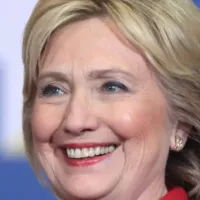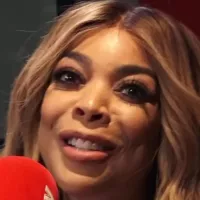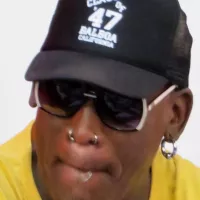Discover the career path of Amelia Earhart, from the first major opportunity to industry-changing achievements.
Amelia Earhart was a groundbreaking American aviation pioneer who vanished over the Pacific Ocean in 1937 during an attempt to circumnavigate the globe. She was the first woman to fly solo non-stop across the Atlantic Ocean and established numerous other aviation records. Beyond her flying achievements, Earhart championed commercial air travel, authored best-selling books detailing her experiences, and played a key role in establishing the Ninety-Nines, an organization for female pilots. Her life and disappearance have made her a lasting cultural icon, symbolizing adventure and women's empowerment.
1917: Service as a Nurse's Aide
During Christmas vacation in 1917, Amelia Earhart visited her sister in Toronto, Canada, and witnessed wounded soldiers returning from World War I. She trained as a nurse's aide with the Red Cross and worked at Spadina Military Hospital, where she developed an interest in flying after hearing stories from military pilots.
January 3, 1921: First Flying Lesson
On January 3, 1921, Amelia Earhart had her first flying lesson at Kinner Field with Neta Snook. To afford the lessons, she worked various jobs and saved $1,000.
October 22, 1922: World Record for Female Pilots
On October 22, 1922, Amelia Earhart flew her Airster to an altitude of 14,000 feet, setting a world record for female pilots, showcasing her skill and determination in aviation.
May 16, 1923: Pilot's License Issued
On May 16, 1923, Amelia Earhart became the 16th woman in the United States to be issued a pilot's license (#6017) by the Fédération Aéronautique Internationale (FAI), marking a significant milestone in her aviation career.
1924: Hospitalization for Sinus Operation and Other Ventures
In 1924, Amelia Earhart was hospitalized for another unsuccessful sinus operation due to her worsening sinus problem. During this time, she also tried setting up a photography company and other ventures.
1925: Employment as a Teacher and Social Worker
In 1925, Amelia Earhart found employment as a teacher and later as a social worker at Denison House, a Boston settlement house, while living in Medford, Massachusetts.
1927: First Official Flight out of Dennison Airport
In 1927, Amelia Earhart flew the first official flight out of Dennison Airport in Quincy, Massachusetts, and also worked as a sales representative for Kinner Aircraft in the Boston area.
June 3, 1928: Friendship's Transatlantic Journey Begins
On June 3, 1928, after several unsuccessful attempts, the Friendship, with adjustments to reduce weight and the departure of Lou Gower, successfully took off from East Boston to begin its transatlantic journey to Trepassey, Newfoundland.
August 1928: Solo Flight Across North America
In August 1928, Amelia Earhart became the first woman to fly solo across the North American continent and back.
August 1928: Earhart's transcontinental record flight
In August 1928, Amelia Earhart completed a transcontinental record flight using an Avro Avian aircraft, which was later retraced in 2001 by Carlene Mendieta as a commemorative flight.
1928: Lecture Tour and Endorsements
Immediately after her return to the United States in 1928, Amelia Earhart undertook an exhausting lecture tour and accepted media endorsements for products, including luggage.
1928: Earhart becomes aviation editor for Cosmopolitan
In 1928, Amelia Earhart became the aviation editor for Cosmopolitan, marking a significant role in her writing career.
1928: First female passenger to cross the Atlantic by airplane
In 1928, Amelia Earhart became the first female passenger to cross the Atlantic by airplane, gaining celebrity status following this event.
1929: Acknowledgment as a Skilled Pilot
In 1929, Amelia Earhart's piloting skills and professionalism were acknowledged by experienced professional pilots who flew with her.
1929: Heavy Promotion and Lucky Strike Deal
In 1929, George Putnam heavily promoted Amelia Earhart, which included publishing a book she wrote, organizing a series of new lecture tours, and using her pictures in media endorsements. Earhart accepted a Lucky Strike cigarettes endorsement deal to support Richard Evelyn Byrd's imminent expedition to the South Pole.
1929: Promoting Air Travel and Women's Role
In 1929, Transcontinental Air Transport (TAT) appointed Amelia Earhart and Margaret Bartlett Thornton to promote air travel, particularly for women, and Earhart helped set up the Ludington Airline, the first regional shuttle service between New York and Washington, D.C.
1929: Meeting of Female Pilots
In 1929, following the Women's Air Derby, Amelia Earhart called a meeting of female pilots to form an organization. She suggested the name Ninety-Nines, based on the number of charter members.
1930: Promotion of Women's Records in Aviation
In 1930, Amelia Earhart became an official of the National Aeronautic Association, and in this role, she promoted the establishment of separate women's records in aviation.
1930: First President of Ninety-Nines
In 1930, Amelia Earhart became the first president of the Ninety-Nines, an organization of female pilots providing moral support and advancing the cause of women in aviation.
1930: Earhart ends role as aviation editor for Cosmopolitan
In 1930, Amelia Earhart ended her role as the aviation editor for Cosmopolitan, concluding her two-year tenure with the magazine.
April 8, 1931: World Altitude Record in Autogyro
On April 8, 1931, Amelia Earhart set a world altitude record of 18,415 feet (5,613 m) flying a Pitcairn PCA-2 autogyro she borrowed from the Beech-Nut Chewing Gum company.
May 20, 1932: Earhart's Solo Flight Attempt to Paris
On May 20, 1932, Amelia Earhart, at age 34, departed from Harbour Grace, Newfoundland, in her Lockheed Vega 5B, aiming to fly solo to Paris. She carried a copy of the Telegraph-Journal to verify the flight's date. After contending with adverse conditions, she landed in a pasture near Derry, Northern Ireland, after a 14-hour and 56-minute flight.
1932: Preparing for Solo Transatlantic Flight
By 1932 Amelia Earhart's visibility in the media helped redefine public perceptions of women in aviation and paved the way for her subsequent solo transatlantic flight.
1932: Helping Isabel Ebel
In 1932 Isabel Ebel helped Earhart. In 1934, Earhart interceded on Isabel Ebel's behalf to be accepted as the first woman student of aeronautical engineering at New York University (NYU).
1932: First woman to make a nonstop solo transatlantic flight
In 1932, Amelia Earhart achieved the milestone of becoming the first woman to make a nonstop solo transatlantic flight, for which she was awarded the Distinguished Flying Cross.
1934: Intervening for Isabel Ebel's Admission to NYU
In 1934, Amelia Earhart interceded on behalf of Isabel Ebel, to be accepted as the first woman student of aeronautical engineering at New York University (NYU).
January 11, 1935: First Solo Flight from Honolulu to Oakland
On January 11, 1935, Amelia Earhart became the first aviator to fly solo from Honolulu, Hawaii, to Oakland, California, using a Lockheed 5C Vega. The flight was mostly routine, and she listened to a Metropolitan Opera broadcast during the final hours.
April 19, 1935: Solo Flight from Los Angeles to Mexico City
On April 19, 1935, Amelia Earhart flew solo from Los Angeles to Mexico City using her Lockheed Vega aircraft, nicknamed "old Bessie, the fire horse".
September 1935: Establishment of Earhart-Mantz Flying School
In September 1935, Amelia Earhart and Paul Mantz established the Earhart-Mantz Flying School, controlled by Mantz. Also in September 1935, Earhart joined Purdue University as a visiting faculty member and technical advisor.
1935: Recognizing the limitations of the Lockheed Vega
By 1935, Amelia Earhart recognized the limitations of her Lockheed Vega for long, transoceanic flights and started contemplating a circumnavigation of the globe and would need a new aircraft.
1935: Visiting faculty member of Purdue University
In 1935, Amelia Earhart joined Purdue University as a visiting faculty member. She served as an advisor in aeronautical engineering and as a career counselor to female students, contributing to education and women's causes.
1935: Participation in the Bendix Trophy Air Race
In 1935, Amelia Earhart participated in the Bendix Trophy long-distance air race, finishing fifth due to her Lockheed Vega being slower than the purpose-built aircraft. The race was marred by the death of a competitor and challenging weather conditions.
July 1936: Lockheed Aircraft Company built the Lockheed Electra 10E
In July 1936, Lockheed Aircraft Company built the Lockheed Electra 10E airplane, funded by Purdue University's Amelia Earhart Fund for Aeronautical Research, with extra fuel tanks and other modifications. Amelia Earhart called it her "flying laboratory".
1936: Planning to Fly Around the World
Early in 1936, Amelia Earhart started planning a 29,000-mile flight around the world along an equatorial route, with the intention of being the first woman to do so. She intended to generate publicity for a planned book about the expedition.
March 17, 1937: First Attempt to Circumnavigate the World Abandoned After Crash
On March 17, 1937, Amelia Earhart and her crew set out on the first leg of her round-the-world flight. A non-fatal crash damaged the aircraft during takeoff from Luke Field in Pearl Harbor, leading to the abandonment of this attempt.
June 29, 1937: Arrival at Lae, New Guinea
On June 29, 1937, Amelia Earhart and Noonan arrived at Lae, New Guinea, after numerous stops in South America, Africa, the Indian subcontinent, and Southeast Asia. At this point, approximately 22,000 miles of their journey had been completed, with 7,000 miles remaining over the Pacific Ocean.
July 2, 1937: Disappearance over the Pacific Ocean
On July 2, 1937, Amelia Earhart disappeared over the Pacific Ocean while attempting to become the first female pilot to circumnavigate the world. This event marked the beginning of the mystery surrounding her fate.
1937: Attempt to Circumnavigate the Globe and Disappearance
In 1937, Amelia Earhart, accompanied by her navigator Fred Noonan, disappeared near Howland Island in the central Pacific Ocean while attempting to become the first woman to complete a circumnavigational flight of the globe. They were flying a Lockheed Model 10-E Electra airplane, and were last seen in Lae, New Guinea.
1938: Establishment of the Amelia Earhart Fellowship
In 1938, Zonta International established the Amelia Earhart Fellowship, awarding US$10,000 annually to women pursuing Ph.D. degrees in aerospace engineering and space sciences.
1940: Vice President of National Airways
By 1940, Amelia Earhart had been appointed as the Vice President of National Airways, which operated Boston-Maine Airways and several other airlines in the northeastern US, and by 1940 had become Northeast Airlines.
1964: Purdue University opens Earhart Hall
In 1964, Purdue University opened Earhart Hall, named in honor of Amelia Earhart's legacy and her contributions to the university as a career counselor and technical advisor.
1973: Induction into the National Women's Hall of Fame
In 1973, Amelia Earhart was inducted into the National Women's Hall of Fame, honoring her impact and legacy as a pioneer for women.
Mentioned in this timeline

Hillary Diane Rodham Clinton is an American politician lawyer and...
California is a U S state on the Pacific Coast...

Christmas is an annual festival celebrated on December th commemorating...
Africa is the second-largest and second-most populous continent comprising of...
Connecticut is a state in the New England region of...

Los Angeles is the most populous city in California and...
Trending
7 months ago Severe Thunderstorms Expected in Alabama: High Winds and Heavy Rainfall Possible

2 months ago HBO's 'Welcome to Derry': Stephen King Prequel, Pennywise Haunts, Questions Arise About Ruining Masterpiece
2 months ago Sleep Token Accused of IG Shutdown Over Tattoo Copyright: Artist Claims Label Involved

29 days ago Dolly de Leon eyes 'Heidi Fleiss' role, joining Aubrey Plaza in Hollywood.

7 months ago Wendy Williams' documentary 'Trapped' explores her health struggles and guardianship battle: Trailer released.

12 days ago Dennis Rodman: NBA's First Real Entertainer and Rebounding Machine, according to BJ Armstrong.
Popular

Candace Owens is an American conservative political commentator and author...
Matt and Ross Duffer known as the Duffer Brothers are...

Ilhan Omar is an American politician currently serving as the...

XXXTentacion born Jahseh Dwayne Ricardo Onfroy was a controversial yet...

Tom Cotton is an American politician and Army veteran currently...
The Kennedy Center Honors are annual awards recognizing individuals and...
